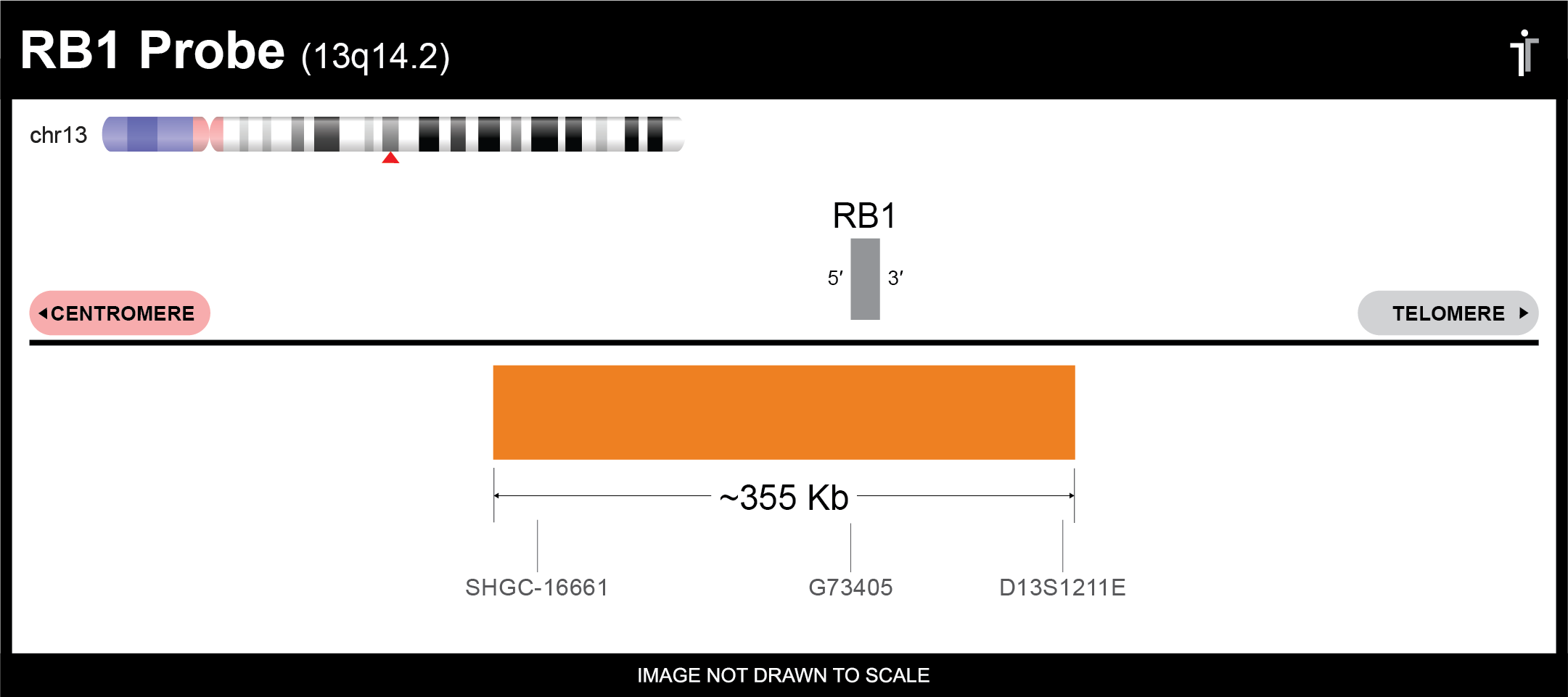RB1 FISH Probe
Our RB1 probe is designed to detect RB1 amplifications and deletions. The probe comes labeled in orange, but can be customized to meet your needs.
Gene Background: RB1 is a well characterized tumor-suppressor gene; bi-allelic inactivation of the RB1 gene due to mutations and/or deletions is causal for the development of retinoblastoma (RB) as well as bladder cancer. Deletions of the RB1 locus are also common in a wide variety of solid tumors and hematologic malignancies including chronic lymphocytic leukemia, multiple myeloma, acute myelocytic leukemia, myelodysplastic syndrome, and chronic myeloproliferative disorders.

** This product is for in vitro and research use only. This product is not intended for diagnostic use.

| SKU | Test Kits | Buffer | Dye Color | Order Now |
|---|---|---|---|---|
| RB1-20-OR (Standard Design) | 20 (40 μL) | 200 μL |

|
|
| RB1-20-RE | 20 (40 μL) | 200 μL |

|
|
| RB1-20-AQ | 20 (40 μL) | 200 μL |

|
|
| RB1-20-GR | 20 (40 μL) | 200 μL |

|
|
| RB1-20-GO | 20 (40 μL) | 200 μL |

|
Gene Summary
The protein encoded by this gene is a negative regulator of the cell cycle and was the first tumor suppressor gene found. The encoded protein also stabilizes constitutive heterochromatin to maintain the overall chromatin structure. The active, hypophosphorylated form of the protein binds transcription factor E2F1. Defects in this gene are a cause of childhood cancer retinoblastoma (RB), bladder cancer, and osteogenic sarcoma. [provided by RefSeq, Jul 2008]
Gene Details
Gene Symbol: RB1
Gene Name: RB Transcriptional Corepressor 1
Chromosome: CHR13: 48877882-49056026
Locus: 13q14.2
FISH Probe Protocols
| Protocol, Procedure, or Form Name | Last Modified | Download |
|---|